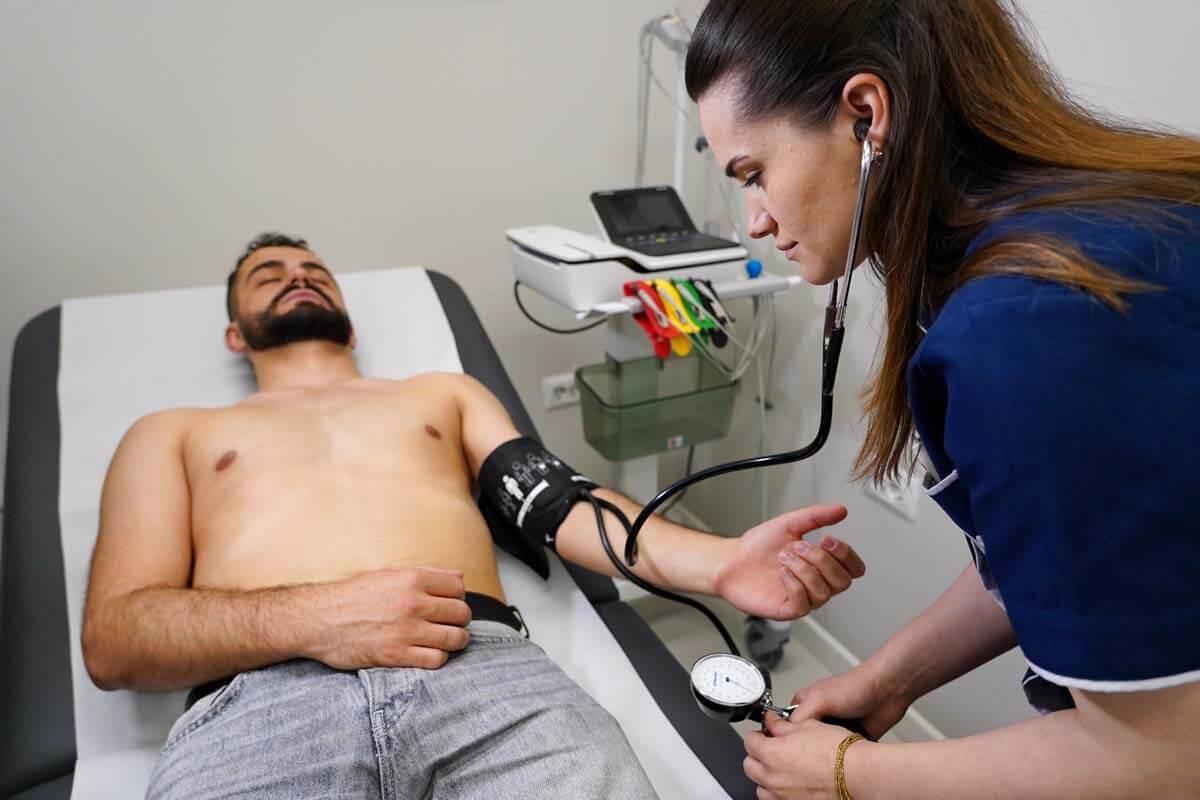
Blood pressure is the pressure of the blood in the heart’s arteries. Arteries carry blood from the heart to all organs. Blood pressure normally rises and falls throughout the day. Average blood pressure is not the same for men and women, and tends to increase with age in both sexes. According to the European Heart Association, the optimal (ideal) blood pressure for adults (over 20 years old) is less than 120/80 mmHg, and normal blood pressure is considered up to 139/89 mmHg.
Why is blood pressure measurement important?
Blood pressure measurement is quick and painless. That is why it is important for people with normal values to measure it occasionally at home. High blood pressure is called the “silent killer” because there are usually no warning signs or symptoms, and many people don’t know they have it.
Before age 55, men are more likely to develop high blood pressure. Women are more likely to develop high blood pressure after menopause.
For people who have elevated blood pressure values, it is important to have regular control and measurement of blood pressure by a cardiologist who will give instructions and possibly prescribe drug therapy.
The pressure is usually measured on the upper arm of both hands. The patient should be seated and relaxed for at least five minutes before taking the blood pressure. Two to three values are measured with an interval of 2-3 minutes. The physiological difference between the two hands is up to 10 mmHg. The official pressure value is the one that was higher by measurement.
What is upper and lower blood pressure?
Blood pressure is recorded through two numbers:
Systolic blood pressure – shows how much pressure the blood exerts on the walls of the arteries when the heart beats.
Diastolic blood pressure – shows how much pressure the blood exerts on the walls of the arteries while the heart is resting between beats.
Usually more attention is paid to systolic blood pressure (the first number) as the main risk factor for cardiovascular disease in people over 50 years of age. In most people, systolic blood pressure increases with age due to increased stiffness of the large arteries. However, the diagnosis of high blood pressure can be established if there is an increase in the value of both the upper and lower blood pressure. According to recent research, the risk of death from coronary heart disease and stroke doubles for every 20 mmHg increase in systolic or 10 mmHg increase in diastolic blood pressure in people aged 40 to 89 years.
How to maintain normal pressure values?
Many people with high blood pressure can lower their blood pressure or keep it within normal limits by making lifestyle changes.
This implies the following measures:
- At least 150 minutes of physical activity per week (about 30 minutes a day, 5 days a week)
- Leaving cigarettes if the person is a smoker
- Healthy diet, limiting sodium (salt) and alcohol
- Maintaining a healthy weight and diet in overweight people
- Stress management




